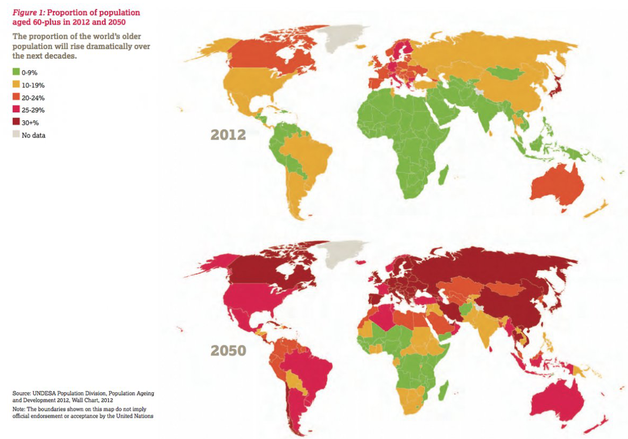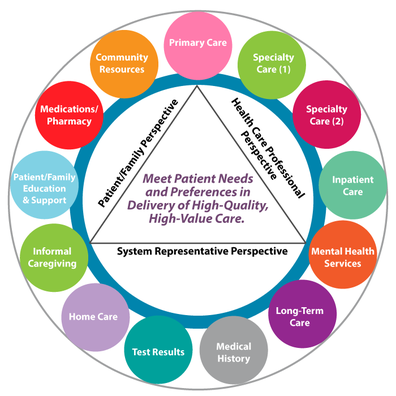|
There are over 62 million Americans over the age of 60 with continued expected growth over the next several years. In fact, people around the world are aging at increasing rates. This rapid growth demands health systems around the world to adapt by embracing innovative solutions to manage the health conditions that may come with this growth. Beyond the health conditions, there are multiple stakeholders involved in care delivery. Therefore, it becomes critical to have a true "quarterback" that is managing this type of complex care. This is the role of primary care. This is the value of direct primary care in elder care. Centers for Medicare and Medicaid (CMS) is pushing for a shift from fee for service care to value based care. Thus, the goal is to reimburse physicians for care coordination. Currently, physicians are not reimbursed for their time spent on care coordination. However, how realistic is it for a traditional primary care physician who is seeing 20-30 patients in the office to be 24/7 available? This is impossible. The solution many health systems have for this is to place mid level providers, like Nurse Practitioners or Physician Assistants, to respond to patient needs. But, how does this facilitate continuity of care or building long lasting relationships? There are call schedules and so forth that prohibit the same physician responding to the same patient on a 24/7 basis. This is where the lapses in communication and continuity of care fall short. Why do older Americans join direct primary care practices? You should really ask them! What you will see is a sweet smile and a look of "are you seriously asking me this question?!" From accessibility to affordability, many patients older than 60 years old will tell you that they join these practices for simply the peace of mind. One doctor in charge. Family members love to have access to that "quarterback" who they can contact to know exactly what is going on with their loved one. House call at their independent living facility or assisted living facility is a huge value for the patient, the facility staff, and family members.
In addition to be able to manage and discuss multiple issues during a single office visit, family meetings are more feasible. Understanding ones definition of quality of life is better understood. More importantly, that definition is the lens by which any future health care services will be recommended. This assures the patient and their family members that everything will be done to protect and secure their right to live a high quality of life. Most membership fees range from $70-100 per month that include many free office procedures and no copays when they visit the office. Medications, imaging, and labs can be purchased using their Medicare or supplemental insurance. BUT, at a direct primary care practice, they can see what the cash price is for the service before deciding to use their insurance. This is true consumerism in health care delivery. Many do not realize how insurance companies delay echocardiograms, stress tests, other imaging studies, and other services by having a horrific prior authorization process. These delays lead to medical complications and delayed care. At least at a direct primary care practice, you can bypass this chaos and pay discounted cash prices for the services and prevent any further headaches. So, if you want the best for your loved ones or yourself, consider a direct primary care practice. From your residence, the office, to hospital care, direct primary care physicians will be at your side to take care of you. We will give you everything we have to offer to make your health care experience the best, while optimizing your definition of quality of life. This is our promise. To a life filled with happiness and peace, Dr Ahmed
27 Comments
|
Author"He who studies medicine without books sails an uncharted sea, but he who studies medicine without patients does not go to sea at all." Archives
March 2023
Categories
All
|
We are passionate about practicing medicine
|
|
CLINIC HOURS
MONDAY 9am-5pm TUESDAY 9am -5pm WEDNESDAY 9am-5pm THURSDAY 9am-5pm FRIDAY 9am-12pm Closed 12pm-1pm daily for lunch SAT&SUN CLOSED |
2024 Holidays - CLINIC CLOSED
New Year's - January 1st Memorial Day - May 27 Independence Day - July 4 & 5 Labor Day - September 2 Thanksgiving - Nov 27, 28 & 29 Christmas - December 24, 25 & 26 |
Contact Us
Tel: (913) 549-3884
Fax: (913) 273-3343
Email: [email protected]
6650 West 110th Street
Suite 220 A
Overland Park, KS 66211
Fax: (913) 273-3343
Email: [email protected]
6650 West 110th Street
Suite 220 A
Overland Park, KS 66211



 RSS Feed
RSS Feed